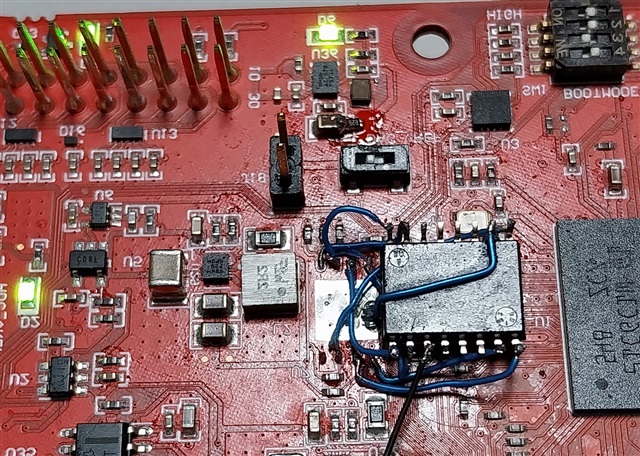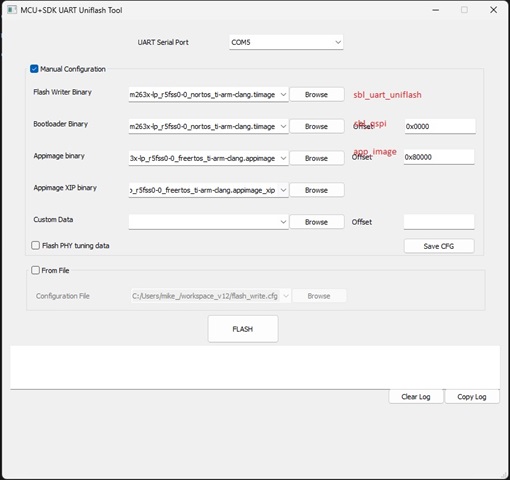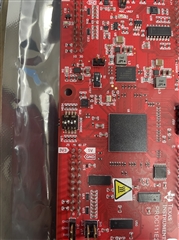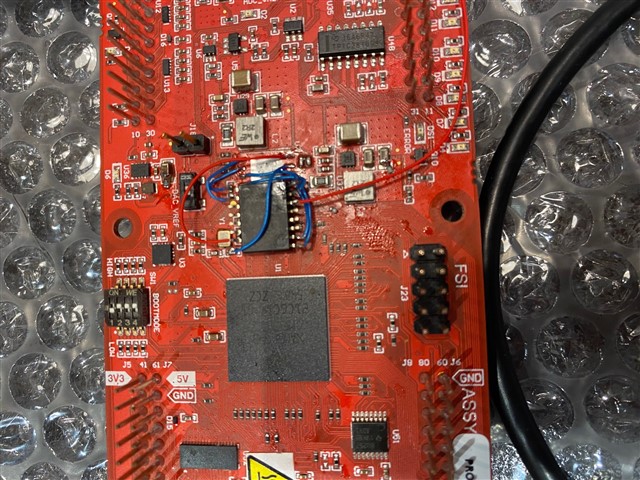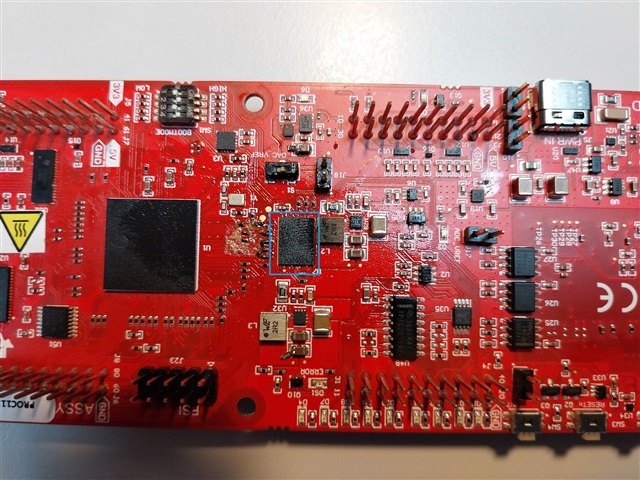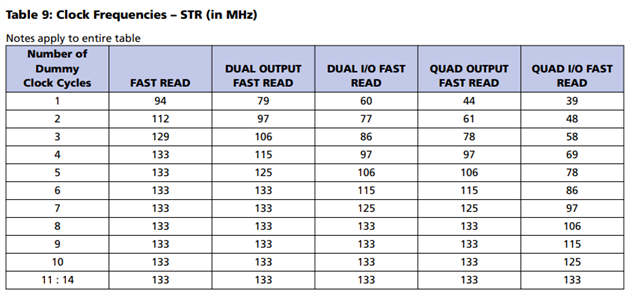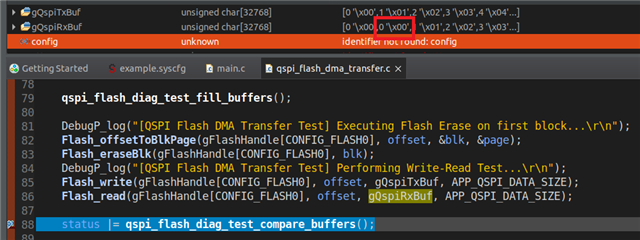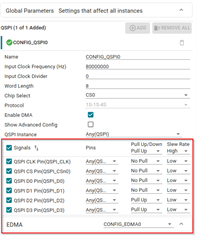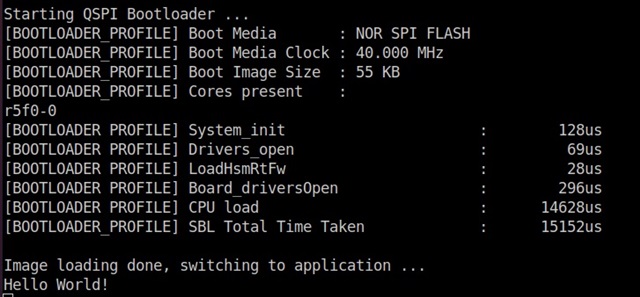Other Parts Discussed in Thread: UNIFLASH, SYSCONFIG, CCSTUDIO
Hi experts,
1. We are trying to use MT25QL512ABB this flash. We put it on LP-AM263x and run qspi_flash_diag_am263x demo project and get json file as attachment.
[Cortex_R5_0] [QSPI Flash Diagnostic Test] Starting ...
[QSPI Flash Diagnostic Test] Flash Manufacturer ID : 0x20
[QSPI Flash Diagnostic Test] Flash Device ID : 0xBA20
[QSPI Flash Diagnostic Test] Executing Flash Erase on first block...
[QSPI Flash Diagnostic Test] Done !!!
[QSPI Flash Diagnostic Test] Performing Write-Read Test...
[QSPI Flash Diagnostic Test] Write-Read Test Passed!
[QSPI Flash Diagnostic Test] SFDP Information :
================================================
SFDP
================================================
SFDP Major Revision : 0x1
SFDP Minor Revision : 0x6
Number of Parameter Headers in this Table : 2
Types of Additional Parameter Tables in this flash
---------------------------------------------------
4 BYTE ADDRESSING MODE INSTRUCTIONS TABLE
{
"flashSize": "67108864",
"flashPageSize": "256",
"flashManfId": "0x20",
"flashDeviceId": "0xBA20",
"flashBlockSize": "65536",
"flashSectorSize": "4096",
"cmdBlockErase3B": "0xD8",
"cmdBlockErase4B": "0xDC",
"cmdSectorErase3B": "0x20",
"cmdSectorErase4B": "0x21",
"protos": {
"p111": {
"isDtr": false,
"cmdRd": "0x03",
"cmdWr": "0x02",
"modeClksCmd": 0,
"modeClksRd": 0,
"dummyClksCmd": 0,
"dummyClksRd": 0,
"enableType": "0",
"enableSeq": "0x00",
"dummyCfg": null,
"protoCfg": null,
"strDtrCfg": null,
},
"p112": {
"isDtr": false,
"cmdRd": "0x3C",
"cmdWr": "0x02",
"modeClksCmd": 0,
"modeClksRd": 1,
"dummyClksCmd": 0,
"dummyClksRd": 7,
"enableType": "0",
"enableSeq": "0x00",
"dummyCfg": null,
"protoCfg": null,
"strDtrCfg": null,
},
"p114": {
"isDtr": false,
"cmdRd": "0x6C",
"cmdWr": "0x34",
"modeClksCmd": 0,
"modeClksRd": 1,
"dummyClksCmd": 0,
"dummyClksRd": 7,
"enableType": "0",
"enableSeq": "0x00",
"dummyCfg": null,
"protoCfg": null,
"strDtrCfg": null,
},
"p118": null,
"p444s": null,
"p444d": null,
"p888s": null,
"p888d": null,
"pCustom": null
},
"addrByteSupport": "1",
"fourByteAddrEnSeq": "0x36",
"resetType": "0x3D",
"cmdWren": "0x06",
"cmdRdsr": "0x05",
"srWip": 0,
"srWel": 0,
"cmdChipErase": "0xC7",
"flashDeviceBusyTimeout": 128000000,
"flashPageProgTimeout": 120
}
All tests have passed!!
2. We have checked the following settings
- Check for 1s-1s-1s mode (We use 1s mode), WEL have to set 1. - done
- HW reliability : Make sure Micron flash can pass boot qspi_flash_dms_transfer (32KB) & qspi_flash_transfer (256B) test - pass
- To increase your timeout value since SPI mode is much slower - done
3. Please find the final settings we configure.
/* FLASH Attrs */
/* FLASH Attrs - populated from SysConfig options */
Flash_Attrs gFlashAttrs_MT25QL512ABB =
{
.flashName = "MT25QL512ABB",
.deviceId = 0xBA20,
.manufacturerId = 0x20,
.flashSize = 67108864,
.blockCount = 1024,
.blockSize = 65536,
.pageCount = 256,
.pageSize = 256,
.sectorCount = 16384,
.sectorSize = 4096,
};
/* FLASH DevConfig */
/* FLASH DevConfig - populated from SysConfig options */
Flash_DevConfig gFlashDevCfg_MT25QL512ABB =
{
.enable4BAddr = false,
.addrByteSupport = 0x00,
.fourByteAddrEnSeq = 0x00,
.cmdWren = 0x06,
.cmdRdsr = 0x05,
.srWip = (1 << 0),
.srWel = (1 << 1),
.resetType = 0x1D,
.eraseCfg = {
.blockSize = 65536,
.sectorSize = 4096,
.cmdBlockErase3B = 0xD8,
.cmdBlockErase4B = 0xD8,
.cmdSectorErase3B = 0x20,
.cmdSectorErase4B = 0x20,
.cmdChipErase = 0xC7,
},
.idCfg = {
.cmd = 0x9F, /* Constant */
.numBytes = 3,
.dummy4 = 0,
.dummy8 = 0,
},
.protocolCfg = {
.protocol = FLASH_CFG_PROTO_1S_1S_1S,
.isDtr = FALSE, /* DTR not supported in this version of flash driver with QSPI */
.cmdRd = 0x03,
.cmdWr = 0x02,
.modeClksCmd = 0,
.modeClksRd = 0,
.dummyClksCmd = 0,
.dummyClksRd = 0,
.enableType = 0xFF,
},
.flashWriteTimeout = 4000,
.flashBusyTimeout = 128000000,
};
However, the issues we have encountered so far, we can use flash writer to write image into Micron flash, but we can't boot SBL.
We set QSPI (1S) - Single Read UART Fallback Mode, but after restarting the power supply, SBL fails to start, so start from external host via UART interface.




